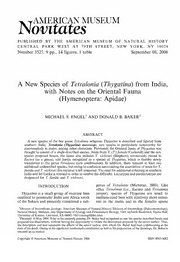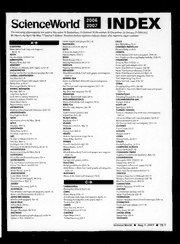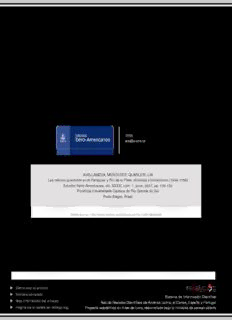
Design suggestions for improvements of the Kendu Bay Adventist Hospital sewage system and PDF
Preview Design suggestions for improvements of the Kendu Bay Adventist Hospital sewage system and
Emil Martinsson Erik Martinsson Sören Säf Bachelor’s of Science Thesis Level ECTS: 30 credits Spring Term 2007 School of Technology and Society Development Assistance Engineering University of Skövde Sweden Supervised by: Programme director Mr. Per Hellström, Development Assistance Enginering Programme School of Technology and Society, University of Skövde, Sweden and Dr. Okumo Odira, Department of Civil and Construction Engineering, University of Nairobi, Kenya. Examinator: Dr. Tobias Andersson, School of Technology and Society, University of Skövde, Sweden ISBN 978-91-633-2366-9 © Emil Martinsson, Erik Martinsson, Sören Säf 2007 Printed by Sören Säf, Jönköping, Sweden, 2007 Abstract The process of allocating necessary resources like clean water, fuel/energy and food have resulted in an unsustainable use of natural resources causing problems with Soil erosion, soil fertility, desertification, deforestation, eutrophication and global warming. The purpose of this study was to gain information on the functional design of a waste management system enabling the organic components of domestic waste to be processed as useful resources while at the same time allow them to be re-circulated. The main part of this study was carried out at the Kendu SDA Hospital in the Rachyonyo district in western Kenya. For the case of this study two main objectives where chosen. The first was to develop a principal technological solution using three classed “appropriate technologies” found suitable for the purpose namely biogas, ecological water treatment systems and slow sand filtration. The second was to further analyse each included technology to further develop their potential to fit the concept. Results from the pilot facilities where then to be retrieved from the actual component selection and construction process itself, with performance analysis left for future studies. The main purpose of the biogas system study has been to evaluate the original ideas of overall concept, details, materials and construction methods. The 1 m3 biogas system has improved significantly during the development process and is today not far from an implementation, i.e. construction on a slightly larger scale. The biogas system developed during the project has proven to have potential for digestion of both latrine and kitchen waste. Using the two as fuel for the process does not only remove a problem – it grants several benefits. The ecological waste water treatment system main objective was to design and construct a pilot SSF-wetland. Results show that the construction process for smaller scaled SSF systems is simple and does not require trained personnel or specialized equipment and that significant cost reduction can be made by using locally available materials. The slow sand filtration sub system concept is called PT SCX and though still in the stage of development proved to have great potential concerning both efficiency and sustainability. The PT SCX comprises the advantages of slow sand filtration with further development of individual system solutions. It was adapted to enable both integration to the IWESS solution and stand alone installations purifying even highly turbid surface water sources to drinking water quality. The result from the study confirms the suitability of the three included technologies, ecological waste water treatment, biogas and slow sand filtration to work in an integrated system called IWESS- Integrated Water Energy and Sanitation Solution. The combined subsystems can together with source separated sewage offer full resource recovery enabling recirculation of both nutrients and water. In addition the system can be designed as a net producer of renewable and emission free energy. Keywords: ecological waste water treatment, slow sand filtration, biogas, source separation, nutrient re-circulation, waste water reuse, waste to resource, soil erosion, soil fertility, desertification, deforestation, eutrophication, global warming, appropriate technologies, anaerobic process. i ACRONYMS BOD Biochemical oxygen demand COD Chemical oxygen demand CW Constructed wetland EPDM Ethylene propylene diene monomer rubber FWS Free water surface GRP Glass fibre reinforced plastic IWESS Integrated water energy and sanitation solution MDG Millenium development goals NTU Nephelometric turbidity units PE Poly ethylene RWH Rain water harvesting SSF Slow sand filtration TS Total solids TSS Totally suspended solids VS Volatile solids WSP Waste stabilization pond ii This study has been carried out within the framework of the Minor Field Studies Scholarship Programme, MFS, which is funded by the Swedish International Development Cooperation Agency, Sida. The MFS Scholarship Programme offers Swedish university students an opportunity to carry out two months’ field work, usually the student’s final degree project, in a country in Africa, Asia or Latin America. The results of the work are presented in an MFS report which is also the student’s Master of Science Thesis. Minor Field Studies are primarily conducted within subject areas of importance from a development perspective and in a country where Swedish international cooperation is ongoing. The main purpose of the MFS Programme is to enhance Swedish university students’ knowledge and understanding of these countries and their problems and opportunities. MFS should provide the student with initial experience of conditions in such a country. The overall goals are to widen the Swedish human resources cadre for engagement in international development cooperation as well as to promote scientific exchange between unversities, research institutes and similar authorities as well as NGOs in developing countries and in Sweden. The International Office at KTH, the Royal Institute of Technology, Stockholm, administers the MFS Programme for the faculties of engineering and natural sciences in Sweden. Sigrun Santesson Programme Officer MFS Programme International Office, MFS KTH, SE-100 44 Stockholm. Phone: +46 8 790 6000. Fax: +46 8 790 8192. E-mail: sigrun@kth.se www.kth.se/student/utlandsstudier/examensarbete/mfs iii Acknowledgements Mr. Wycliffe Odhiambo Osumba, Kendu Bay SDA Hospital, Kenya Mr. Erick Agembe with staff, business manager, Kendu Bay SDA Hospital, Kenya Dr. Odira Patts M. Akumu, University of Nairobi, Kenya Mr. Orodi Odhiambo, University of Nairobi, Kenya Mr. Paul Mboya, University of Nairobi, Kenya Mr. Justin Onyango, University of Nairobi, Kenya Mr. Björn Martén, GEIST, Sweden Mr. Jørgen Løgstrup, Transform Danish Root Zone, Denmark Mr. Folke Günther, Holon Ecosystem, Sweden Mr. Per Hellström, University of Skövde, Sweden Mrs. Karin Ekman, University of Skövde, Sweden Prof. Gunnel Dalhammar, KTH the Royal Institute of Technology, Sweden Ms. Sigrun Santesson, KTH the Royal Institute of Technology, Sweden iv Table of contents Abstract ...................................................................................................................................... i ACRONYMS ............................................................................................................................ ii Acknowledgements .................................................................................................................. iv Table of contents ....................................................................................................................... v 1 Introduction ........................................................................................................................... 1 1.1 Background ................................................................................................................ 1 1.2 Objectives ................................................................................................................... 2 2 Current sanitary waste management, disadvantages and appropriate improvements 3 2.1 The drop and store principle ....................................................................................... 3 2.2 The Flush and discharge/MIFSLA system principle .................................................. 4 3 IWESS - Integrated Water Energy and Sanitation Solution ............................................ 6 3.1 An IWESS design for the Lake Victoria basin, Kenya .................................................... 6 4 Biogas system for the IWESS concept ................................................................................. 9 4.1 Biogas plants made for the third world ............................................................................ 9 4.2 Individual Benefits ......................................................................................................... 10 4.2.1 Removal of waste .................................................................................................... 10 4.2.1.1 Bacteria ................................................................................................................ 10 4.2.1.2 Virus ..................................................................................................................... 11 4.2.1.3 Fungi .................................................................................................................... 11 4.2.1.4 Parasitic protozoa and helminths ........................................................................ 11 4.2.1.5 Odour ................................................................................................................... 11 4.2.2 Energy ..................................................................................................................... 11 4.2.3 Effluent .................................................................................................................... 12 4.3 Biogas in an integrated system ....................................................................................... 13 4.4 Pilot site in Kendu Bay, Kenya ...................................................................................... 14 4.4.1 Background ............................................................................................................. 14 4.4.2 Overview of plant .................................................................................................... 14 4.4.3 Operation ................................................................................................................. 14 4.4.3.1 Start-up Procedure ............................................................................................... 14 Start-up procedure of the pilot plant ................................................................................ 15 4.4.3.2 Feeding ................................................................................................................. 16 Kitchen waste ................................................................................................................... 16 Toilet waste ...................................................................................................................... 16 4.4.3.3 Feeding of the pilot plant ..................................................................................... 17 4.4.3.2 Calculated loading rate for pilot plant ................................................................ 20 4.4.5 Construction materials and methods ....................................................................... 20 4.4.5.1 Plastic ................................................................................................................... 20 HDPE ............................................................................................................................... 21 Plastic Welding ................................................................................................................ 21 4.4.5.2 EPDM-rubber ....................................................................................................... 21 4.4.6 Detailed description ................................................................................................. 22 4.4.6.1 Latrine .................................................................................................................. 22 4.4.6.2 Mixing chamber .................................................................................................... 22 4.4.6.3 Digester ................................................................................................................ 23 4.4.6.4 Storage bladder .................................................................................................... 24 4.4.6.5 Distribution of Gas and Water Seals .................................................................... 25 v 4.4.6.6 Stove ..................................................................................................................... 25 4.4.6.7 Insulation .............................................................................................................. 26 Cradle with walls ............................................................................................................. 26 Roof .................................................................................................................................. 26 Bags of grass .................................................................................................................... 27 4.4.7 Measuring modifications and analyses ................................................................... 27 4.4.9 Performance of the pilot plant ..................................................................................... 27 4.4.9.1 Overall .................................................................................................................. 27 4.4.9.2 Latrine .................................................................................................................. 28 4.4.9.3 Mixing chamber .................................................................................................... 28 4.4.9.4 Digester ................................................................................................................ 28 4.4.9.5 Storage bladder .................................................................................................... 29 4.4.9.6 Distribution of Gas and Water Seals .................................................................... 29 4.4.9.7 Stove ..................................................................................................................... 29 4.4.9.8 Roof ...................................................................................................................... 29 4.4.9.9 Cradle with walls ................................................................................................. 30 5 Design and construction of the Kendu SDA Hospital Pilot SSF wetland system .......... 31 5.1 Introduction .................................................................................................................... 31 5.1.1 Background ............................................................................................................. 31 5.1.2 Objectives ................................................................................................................ 32 5.2 Design and construction of the Kendu SDA Hospital Pilot SSF wetland system. ......... 32 5.2.1 Introduction ............................................................................................................. 32 5.2.1.1 Background .......................................................................................................... 32 5.2.1.2 Objectives ............................................................................................................. 33 5.2.2 Waste water Source details ..................................................................................... 33 5.2.2.1 Design flow meassurement ................................................................................... 33 5.2.2.2 Chemical analysis ................................................................................................ 34 5.2.3 Process/physical design ........................................................................................... 35 5.2.3.1 Site selection ......................................................................................................... 35 5.2.3.2 Basin lining .......................................................................................................... 35 5.2.3.3 Substrate ............................................................................................................... 36 Substrate choices/ availability ......................................................................................... 36 5.2.3.4 Macrophytes, Bamboo .......................................................................................... 40 5.2.3.5 Airation tubes/natural airation ............................................................................ 42 5.2.3.6 Calculating wetland surface-area ........................................................................ 43 5.2.3.7 Aspect ratio configuration .................................................................................... 45 5.2.3.8 Theoretical hydraulic retention time .................................................................... 47 5.2.3.9 Hydrological budget ............................................................................................. 47 5.2.4 Physical design/construction of pilot system .......................................................... 48 5.2.4.1 Grey water separation and conveyance ................................................................ 48 5.2.4.2 Basin construction ................................................................................................ 49 5.2.4.3 Inlet structures ...................................................................................................... 50 5.2.4.4 Substrates ............................................................................................................. 52 5.2.4.5 Outlet structures ................................................................................................... 52 5.2.4.6 Airation tubes ....................................................................................................... 53 5.2.4.7 Sampling tubes ..................................................................................................... 53 5.2.4.8 Planting ................................................................................................................ 54 5.2.5 Costs ........................................................................................................................ 54 6 Small scale decentralised slow sand filtration for the IWESS concept .......................... 57 6.1 Introduction .................................................................................................................... 57 vi 6.1.1 Background ............................................................................................................. 57 6.1.2 Objectives ................................................................................................................ 58 6.2 Introduction to slow sand filtration ................................................................................ 58 6.2.1 System dimensioning .............................................................................................. 59 6.2.2 The characteristics of the sand ................................................................................ 64 6.3 SSF maintenance and operation ..................................................................................... 66 6.4 Pre-treatment of raw water ............................................................................................. 67 6.4.1 Roughing filters ....................................................................................................... 67 6.4.2 Chemically enhanced coagulation/flocculation/sedimentation ............................... 68 6.5 Areas of use/applications for traditional SSF systems ................................................... 69 6.6 Limitations of traditional SSF systems .......................................................................... 69 6.7 The PT SCX system solution ......................................................................................... 70 The decentralised out reaching water purification system ............................................... 70 6.8 Initial evaluation in Kendu bay, Kenya. ......................................................................... 71 6.8.1 Surface water quality ............................................................................................... 71 6.8.2 System appropriateness/sustainability in relation to operation and maintenance ... 73 6.8.3 Local financial survey ............................................................................................. 74 6.9 Second prototype evaluation .......................................................................................... 75 6.10 PT SC(X) system principle description ........................................................................ 76 6.11 PT 2000SCX system production capacity .................................................................... 77 6.12 Operation scheme ......................................................................................................... 77 6.13 System cost and cost recovery plan .............................................................................. 79 6.14 Further development .................................................................................................... 80 6.15 The PT SCX system role in the IWESS principle. ....................................................... 81 7 Conclusions and recomendations .................................................................................. 82 8 References ....................................................................................................................... 85 Appendix A ............................................................................................................................. 89 Appendix B .............................................................................................................................. 95 vii viii
Description:The list of books you might like

A Thousand Boy Kisses

The 5 Second Rule: Transform your Life, Work, and Confidence with Everyday Courage

The Strength In Our Scars

The Mountain Is You

La guerra de dos mundos

Алгебра. 8 класс

DTIC ADA445281: Guide for Preparing Technical Information Reports of the Engineer Research and Development Center

The Gate

Yerbas medicinales Argentinas : breves apuntes de las propriedades de 200 de las mismas e indicaciones para su uso

Meat Science 1993: Vol 33 Table of Contents

Review of the flying fish family exocoetidae in the Indian waters
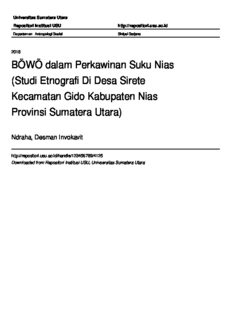
böwö dalam perkawinan suku nias departemen antropologi sosial
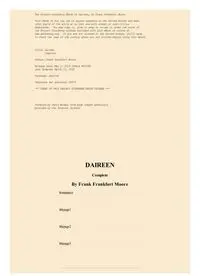
Daireen complete by Frank Frankfort Moore
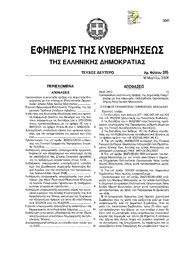
Greek Government Gazette: Part 2, 2006 no. 315

Mentats of Dune
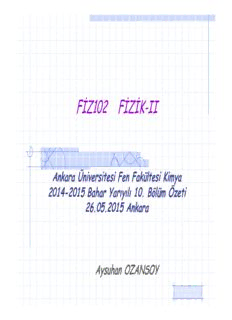
Bölüm-10-sunu
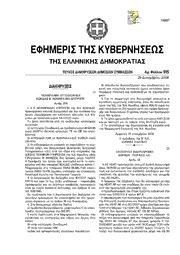
Greek Government Gazette: Part 7, 2006 no. 915
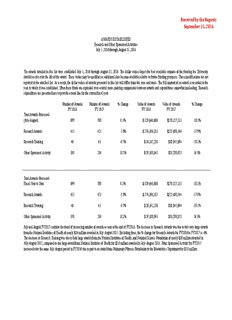
Awards Established, July 1, 2016-August 31, 2016
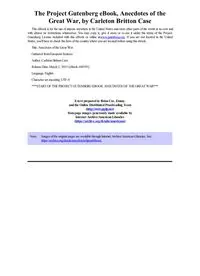
Anecdotes of the Great War by Carleton Britton Case
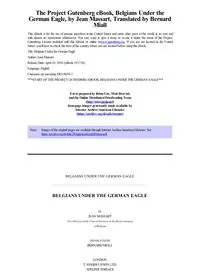
Belgians Under the German Eagle by Jean Massart

The Outsider
